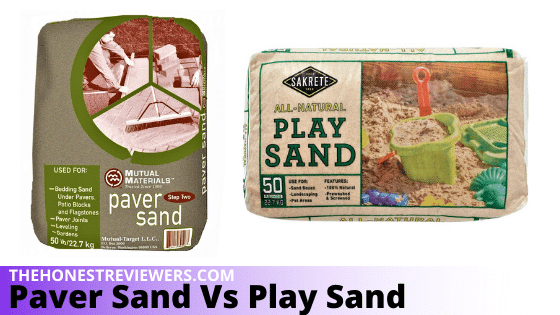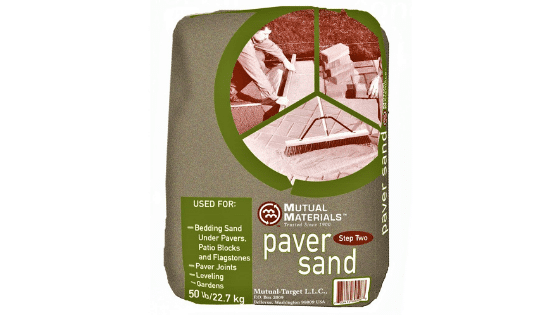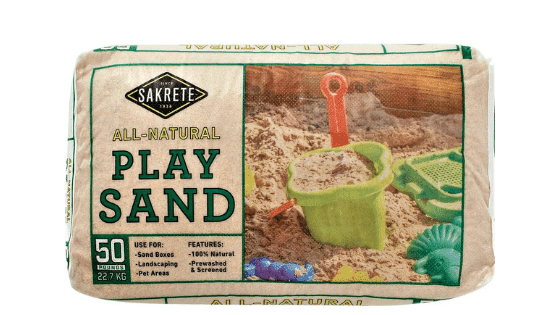Table of Contents
Last Updated on January 25, 2023 by Heenan
Sitting on a cozy chair on your patio in the afternoon and watching your kid play with the sandbox feels pretty delightful. And a hot cup of tea on the table waiting to slide down your throat.
But suddenly, you start to feel painful pinches on your feet. Ooouuchh! What’s happening? OMG! Ants!!!!!!! And they’re all over your patio. And things get even worse when you hear your child screaming.
You look at her and see that something went into her eyes! She can’t even take it out. What misery! You must be cursing your luck, right?
But we say that it’s not about luck, it’s about the sand! You probably used paver sand at the place of play sand and vice versa. Don’t worry we’re going to discuss the difference between paver sand and play sand so that you can properly use them in the right place to avoid such nuisance in the future.
What Is Paver Sand?
To acknowledge the differences, you should first know what is paver sand. This type of sand is also known as jointing sand, hardscape sand, or the most popular type of polymeric sand.
It is built from refined grains that have been mixtures with particular additives such as polymers. When it adjoins with water, it creates an extremely powerful binding agent that meshes the sand particles altogether.
Pavers installers appreciate polymeric sand due to its capacity to deliver even and, most importantly, durable joints. As a result, weed growth that affects the whole aesthetics of the projects comes down to zero.
There are also a few advantages of paver sand. Such as, it resists ants from making homes between the spaces of the pavers. Then, due to the presence of silica and polymer, heavy rain won’t be able to wash out the sand from the gaps of the pavers.
Paver Sand Uses
As you know that while installing pavers, there remain gaps between the paver joints. Right? Now filling up the joints is essential; otherwise, the surface would become vulnerable and inconsistent.
Guess what, right there between the paver; you need to use the polymeric sand. This sand is used to fill paver joints between stone pavers, concrete pavers, and brick pavers. The ultra-powerful binders lock in the sand particles so that the pavers turn into a durable and uniform surface.
Best Paver Sand
How Much Paver Sand Do I Need?
To know the amount of paver sand you need, you must know the surface area you’re paving. Then measure the number of cubic feet of sand you’ll need to cover your preferred area with a 1-inch thick layer.
To find the area of a rectangle, multiply the length by the width. And if you’re paving right-angle triangles, the area is height multiplied by half the base. So, for instance, if your area is 12 feet long and 10 feet wide, then the surface area is 12 × 10 = 120 square feet.
After finding the area, you need to get the number of cubic feet of sand needed. It’s very easy, just divide the surface area in square feet by 12, as one inch is 1/12 of a foot. Here is an example to make things clear, paving area = 120 square feet divided by 12, which equals 10 cubic feet of sand.
What Is Play Sand?
Unlike typical sands that are used for the construction industry, concrete production, and glass making, play sand is completely different. It is a non-staining, non-toxic substance that contains sub-rounded grains, which is safe for playing and learning for children.
This type of sand goes through multiple treatment processes to become play sand. The process goes something like this firstly, ferrous oxide is washed to make the sand non-staining. At the same time, the sand grains are turned fine and rounded by slightly changing the water pressure.
You know play sand needs to be sub-rounded so that if it goes in the eyes, it is easy to remove. Remember your child was crying because sand went into her eyes while playing, and she couldn’t take it out. That’s because you didn’t place play sand.
Play Sand Uses
You’re wrong if you think that play sand is only meant for children to play. There are plenty of things you can do with play sand. Let’s see what play sand can be used for.
To Mark Time
Well, do you remember the “3-minute egg timer” where sand flows from top to bottom of the timer? Well, it’s not ancient history; people still use play sand to mark time by this process.
To Make Crafts
You can melt beeswax and paraffin into a coffee can onto an open fire, right at the beach. Then, make hollows into the sand and pour them into the hole. Gradually, the wax will harden and will trap some of the sand to make a pretty interesting shape.
If you brush carefully, you can remove the loose sand. In this way, you can imprint different crafts like dolls, shells, etc.
To Paint
You can add play sand to your regular house paint to make a wash that is capable of restoring walls or concrete floors. If you need an additional grip, for example, on the wheelchair ramps, you can add this on the ramps too.
Where to Buy Play Sand?
Buying play sand is like a walk in the park. Literally, you can walk through the park to your local home improvement shop to buy the sand. You can just browse the internet, there are plenty of online stores that sell play sand online.
Basically, this type of sand is available in 15-kg or 20-kg bags. There are several manufacturers marketing this type of sand by different names.
Best Play Sand
How to Make Play Sand?
Making toddler-safe play sand is a pretty sample. Basically, the recipe is 8 cups of whole-wheat flour and 1 part of vegetable oil.
We, however, began using 4 cups of flour with ½ cup vegetable oil. You can adjust the recipe depending on the amount of sand you desire. Now you can call your kids to measure and pour the flour into a bin and then pour the oil in it. Then tell your kid to mix it simultaneously.
It has a light brown color that makes it similar to sand. You know what makes the play sand different from other sand; it’s the consistency of damp beach sand but without being wet or sticky. Besides, since it’s moldable, your kid can mold it like the real beach one.
Paver Sand vs Play Sand: Which One Is Better?
Now look, each of the sand has its advances and drawbacks. Paver sand is the ultimate choice when it comes to filling the crevices in pavers. It doesn’t wash away with water due to its strong binding agent. But you should not use it to fill a sandbox cause this type of sand doesn’t go through the ingestion testing and cleaning process.
On the other hand, play sand comes to the market after going through a different trial, making it hygienic and dust-free. Such trails aim to make the sand safe for the child.
Therefore, we can say that each of the sand is better only if used in a perfect place.
Final Verdict
We’ve discussed every detail of the paver sand and play sand. By studying the fact, you might have already understood that both the sands are suitable for use. You need to make sure you’re using each of the sand where it needs to be used.
Because if you use play sand instead of paver sand for paver, you’ll have to face unwanted painful scenarios.
Related Resources:
#1. Differences between Polymeric sand and Regular Sand for Pavers.
#2. 10 Most Easy ways to use Polymeric Sand.
#3. Alternatives to Polymeric Sand.



